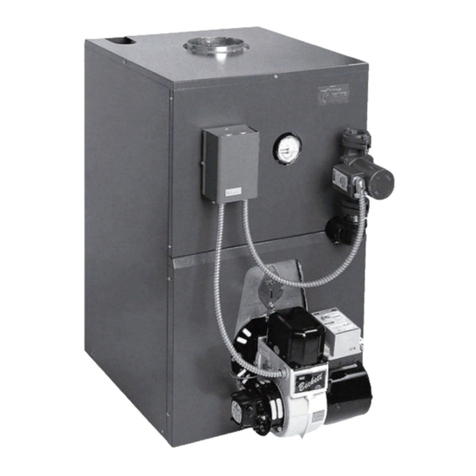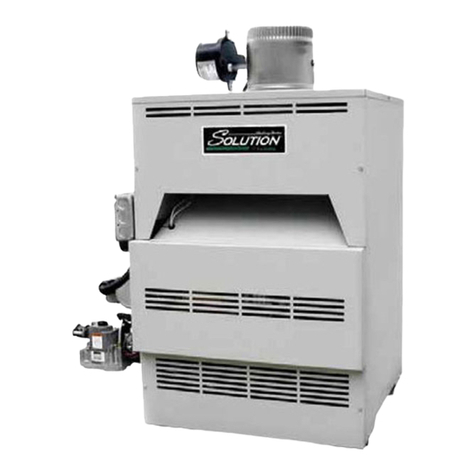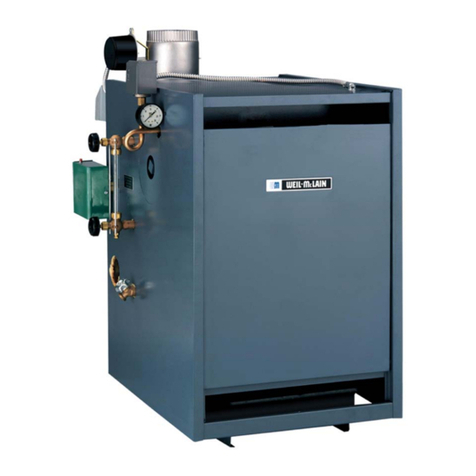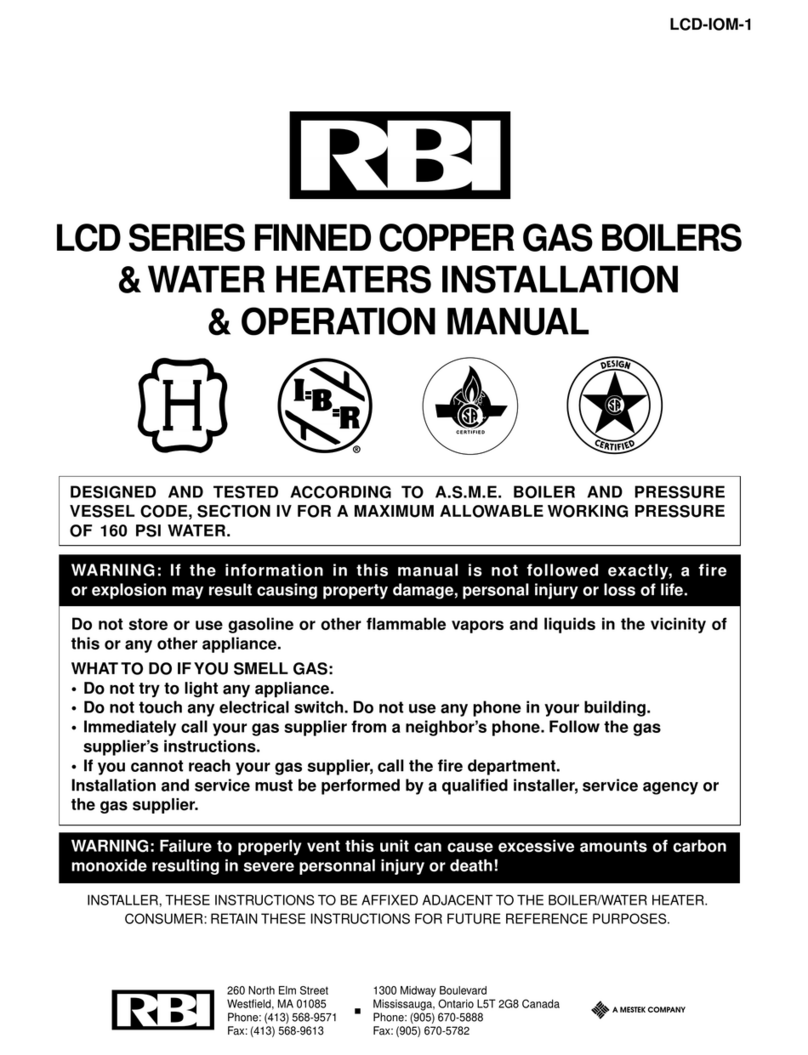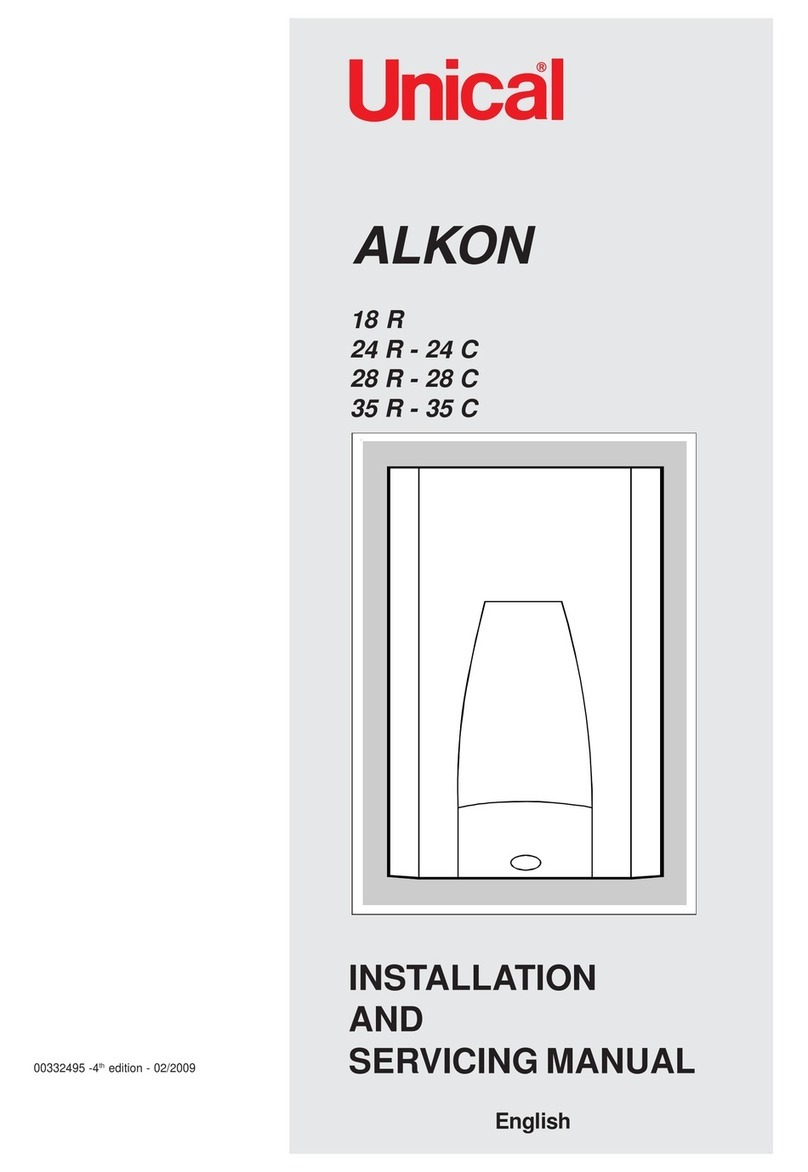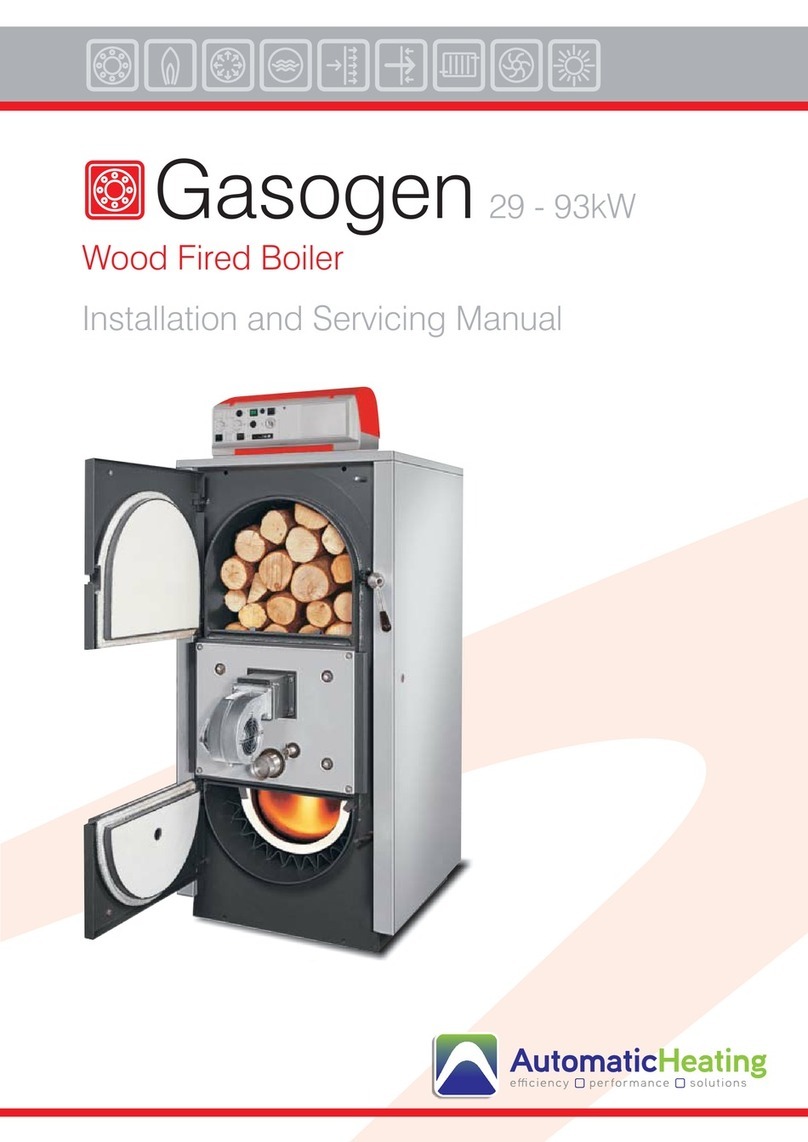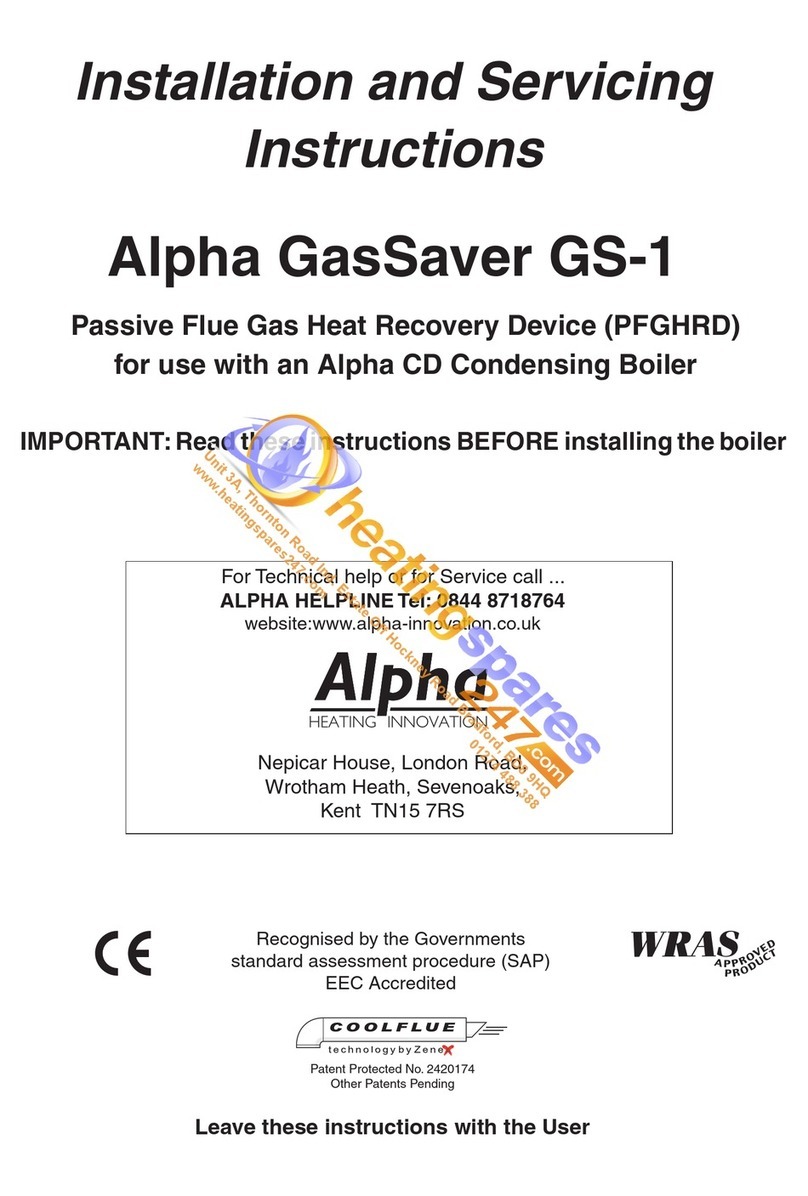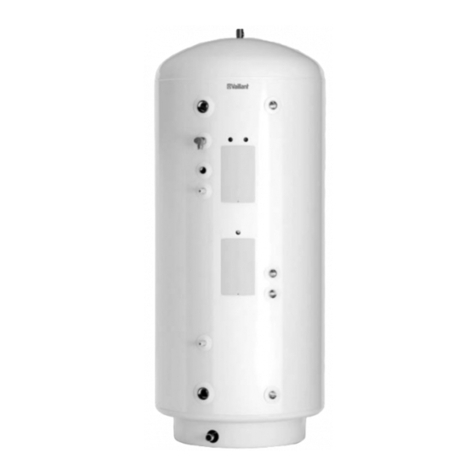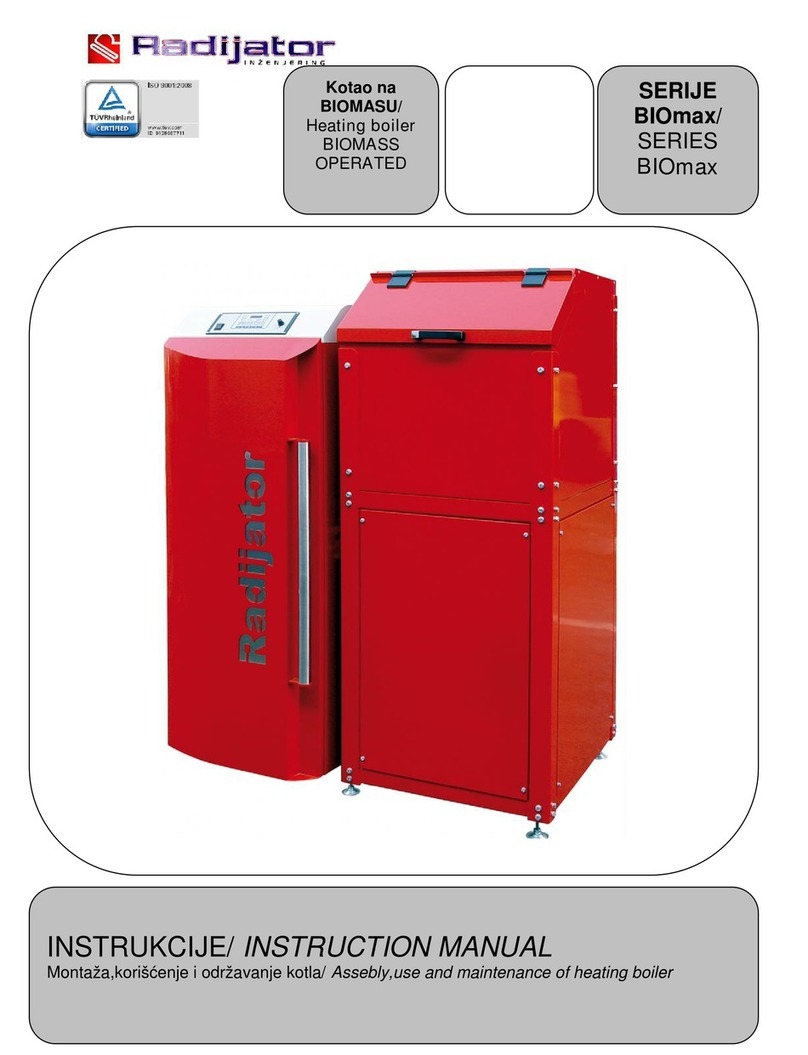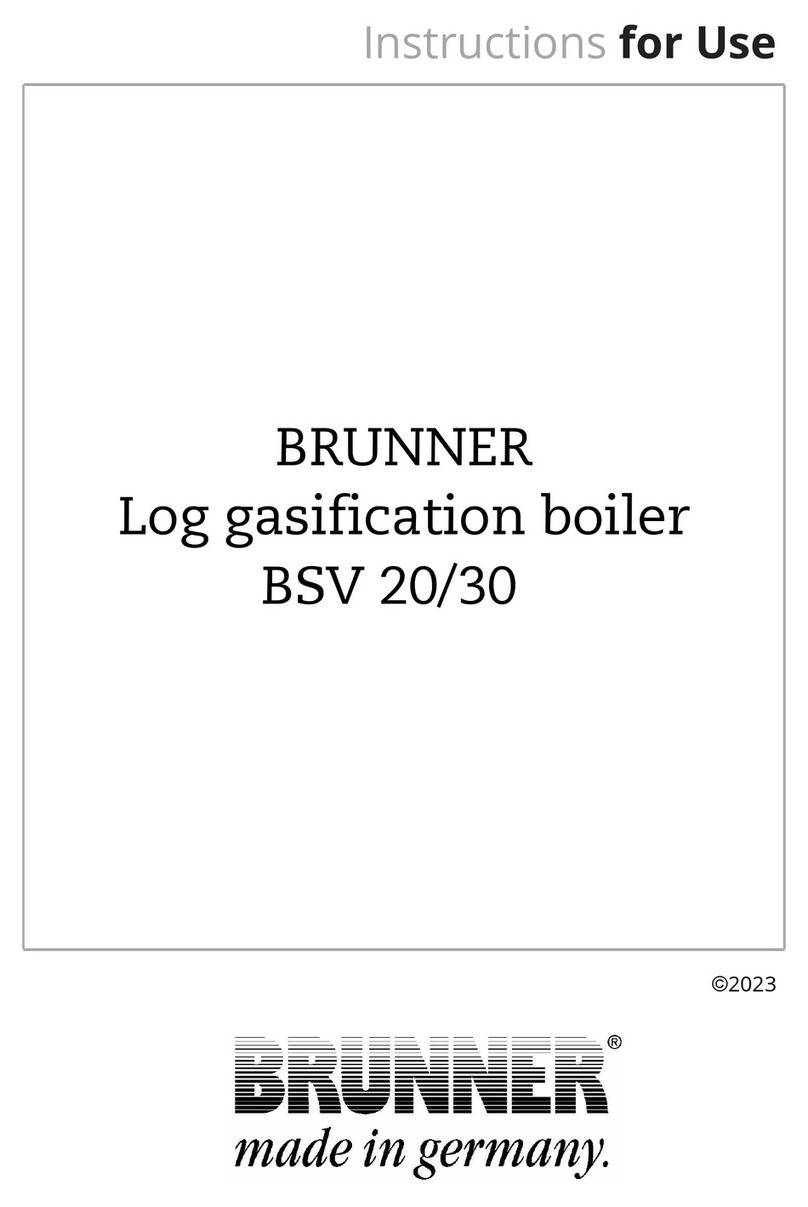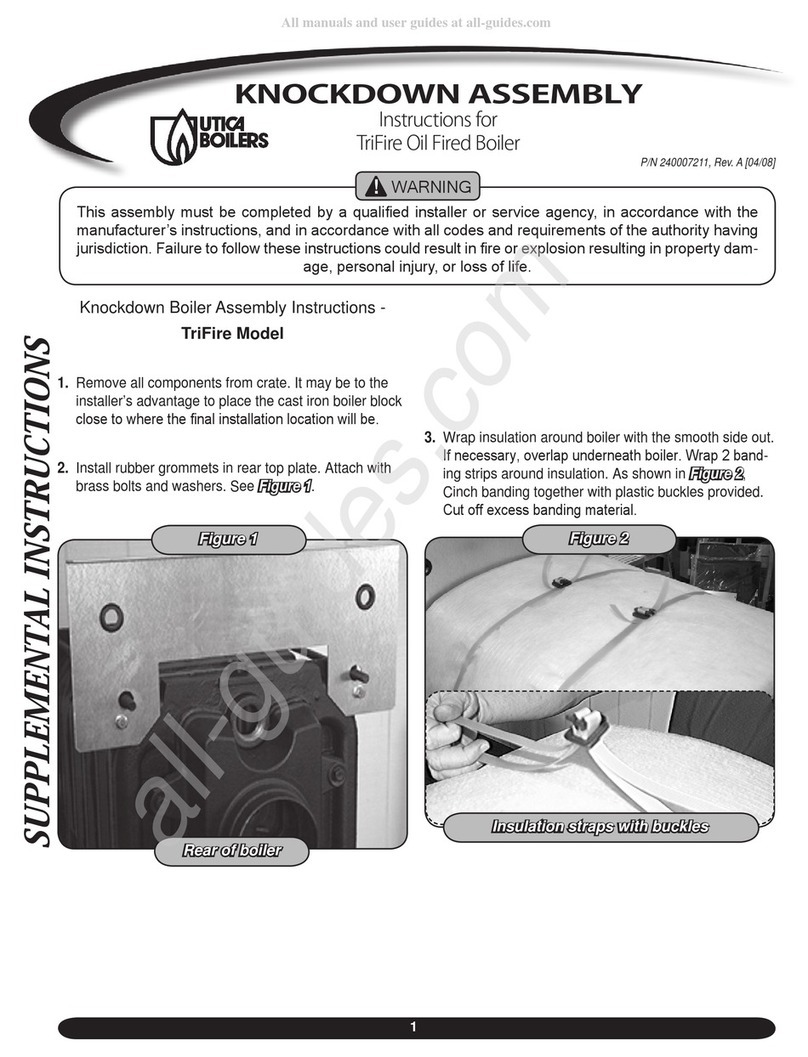
BKM120
8
Installation and commissioning
Temperature range Fuel
>5°C Heating oil EL
-10–5°C Winter diesel
<-10°C Kerosine (EN304)
If inside the oil supply line to the boiler there
is still a rest of combustible not suitable for the
outside temperature, you may have to pre-heat
the oil supply line.
Note
4.2.3 Secondary circuit
The two connections for the secondary circuit are
placed at the unit’s back (ow on the right side,
return on the left side). If necessary, please take
off the closing caps rst.
4.2.4 Condensate pipe
During operation of the unit, condensate is con-
stantly created. Normally, the condensate auto-
matically leaves the unit via the central rear drain
channel. If this is not desired because the out
owing condensate cannot seep away, the con-
densate pipe (plastic hose) must be lead through
the ap of the drain channel into a suitable area
or basin.
The outcoming condensate is warm. In case of
very low outside temperature, the condensate
pipe must nevertheless be protected against
freezing, especially it goes over long distances.
Note
Before commissioning ll the neutralization box
and the siphon with water.
4.2.5 Electrical connection
The plug for the electrical connection is placed
on the upper rear side of the unit. It is a blue IEC
60309 plug (16 A, 230 V, 50/60 Hz, L-N-PE).
Connect the unit to 230V / 50Hz. The elec-
tric connection must be done by authorized
personnel.
Warning
4.3 Commissioning
Before commissioning, make sure that
• in the primary circuit, there is a pressure of
minimum 1,5bar (if the pressure is lower,
you have to add heat transfer liquid, see
chapter "Maintenance and servicing").
4 Installation and commissio-
ning
Fig. 1: Control panel BKM120
Main switch BKM120
Light
Main switch boiler
Boiler control
Changeover switch
Preheat/Boileroperation
Heating of neutralization-
box and siphon
Signal lamp bur-
ner malfunction
Resetbutton for safety tem-
perature limiter
4.1 Installation
The ground on site where the BKM120 will be
installed must be rm and plane (max. 2° dec-
line). If the unit is supposed to be placed on the
naked ground, it must be shimmed suitably in
order to avoid tilting when the ground gets wet,
e.g. by rain.
A distance of 1 m to walls or objects must be kept
from all sides of the unit.
Do not install the unit in rooms containing explo-
sive dust, smoke, ammable gas or liquids.
Make sure that the air intake at the unit’s back is
not blocked. The ue gas must be able to escape
to the outside. When installed in a hall, the maxi-
mum length of the ue gas pipe is 20 m. Provide
the necessary air supply in the hall.
4.2 Mounting and connection
4.2.1 Flue gas pipeline
1. Take the ue gas connection pipe (chimney
with angle) off the bracket at the back of the
BKM120.
2. Take off the closing plug from the ue gas
connection piece.
3. Mount the ue gas connection pipe at the
connection piece and align it as vertically
upwards as possible.
4. Fix the ue gas pipe using the pipe clamp.
4.2.2 Oil pipe
The connection for the oil pipe is placed in the
upper area of the unit’s back (Quick coupling).
The fuel in use must be suitable for the outside
temperatures indicated in the following table.

